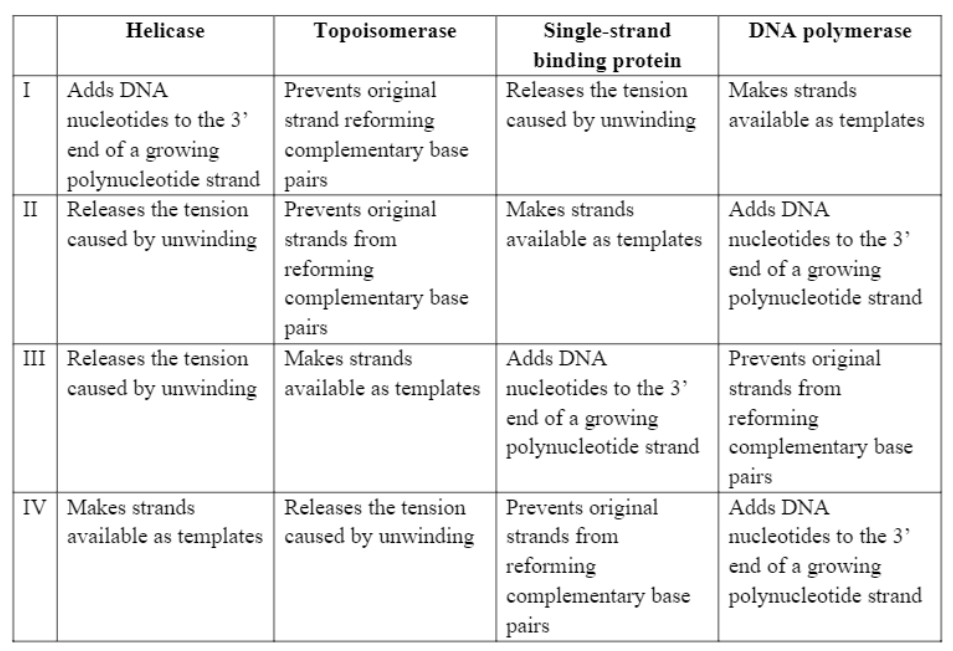The correct inorganic contact of enzyme nitrogenase is
Mo-Fe protein
Mo-Mn protein
Mn-Fe protein
Cu-Fe protein
The correct Answer is:A
To solve the question regarding the correct inorganic content of the enzyme nitrogenase, we can follow these steps:
1. Understanding Nitrogenase:
- Nitrogenase is an enzyme that plays a crucial role in the nitrogen fixation process, which is essential for converting atmospheric nitrogen (N₂) into ammonia (NH₃) that plants can utilize.
2. Identifying Organisms:
- Nitrogenase is primarily found in prokaryotic organisms, such as certain bacteria (e.g., Rhizobium and Nostoc), which are capable of fixing nitrogen.
3. Analyzing Options:
- The question provides four options regarding the inorganic components of nitrogenase:
- A) Molybdenum iron protein
- B) Molybdenum or manganese protein
- C) Manganese or iron protein
- D) Copper and iron protein
4. Researching Inorganic Components:
- The enzyme nitrogenase is known to contain specific metal cofactors that are essential for its activity. The most common inorganic components associated with nitrogenase are molybdenum (Mo) and iron (Fe).
5. Selecting the Correct Option:
- Based on the known composition of nitrogenase, the correct answer is:
- A) Molybdenum iron protein.
Final Answer:
The correct inorganic content of the enzyme nitrogenase is molybdenum iron protein (Option A).
---
- Nitrogenase is an enzyme that plays a crucial role in the nitrogen fixation process, which is essential for converting atmospheric nitrogen (N₂) into ammonia (NH₃) that plants can utilize.
- Nitrogenase is primarily found in prokaryotic organisms, such as certain bacteria (e.g., Rhizobium and Nostoc), which are capable of fixing nitrogen.
- The question provides four options regarding the inorganic components of nitrogenase:
- A) Molybdenum iron protein
- B) Molybdenum or manganese protein
- C) Manganese or iron protein
- D) Copper and iron protein
- The enzyme nitrogenase is known to contain specific metal cofactors that are essential for its activity. The most common inorganic components associated with nitrogenase are molybdenum (Mo) and iron (Fe).
- Based on the known composition of nitrogenase, the correct answer is:
- A) Molybdenum iron protein.
The correct inorganic content of the enzyme nitrogenase is molybdenum iron protein (Option A).
Similar Questions
Knowledge Check
Assertion: The enzyme nitrogenase is a Mo-Fe protein and catalyses the conversion of atmospheric nitrogen to ammonia.
Reason: The enzyme nitrogenase is highly sensitive to the molecular oxygen.AIf both assertio and reason are true and reason is the correct explanation of assertionBif both assertion and reason are true but reason is not the correct explanation of assertionCif assertion is true but reason is falseDif both assertion and reason are false
Which of the following prevents inactivation of enzyme nitrogenase by oxygen poisoning, during biological nitrogen fixation?
View SolutionInorganic catalysts are
View SolutionFor its action, nitrogenase requires
View SolutionFor its action, nitrogenase requires
View SolutionRead the following statements and select the correct answer.
(i). Rhizobium leguminosarum is also known as Bacillus radicicola.
(ii). Nitrifying bacteria (Nitrosomonas, etc.) are chemoautotrops.
(iii). Enzyme nitrogenase fixes N2 under aerobic condition.
(iv). Leghaemoglobin creates aerobic conditions for the enzyme nitrogenase.
View SolutionWhich of these is the correct function of enzymes/ Protein used in DNA replication ?

View SolutionInorganic cofactor is often called
View Solution
